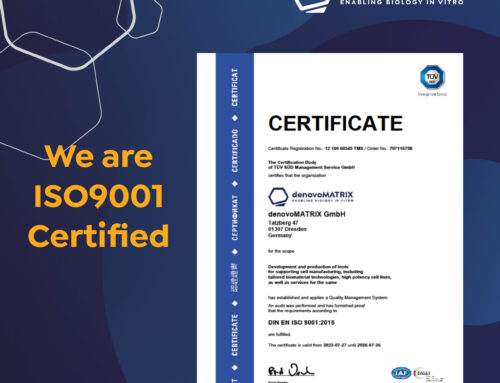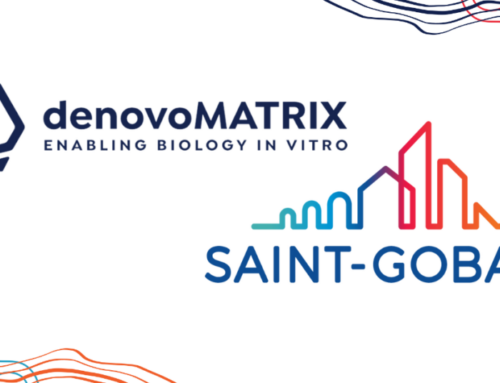by Hifsa Perves
WITH THE CLOCK TICKING AND A POOL OF EVOLVING DISEASES YET TO BE CURED, SCIENTISTS AND RESEARCHERS WORLDWIDE ARE FINDING WAYS TO MIMIC WHAT OUR BODIES DO, AND THEY WANT RESULTS – REAL RESULTS THAT CAN BE TRANSLATED INTO REAL-LIFE SITUATIONS. However, in the current era of massive information exchange, emerging buzzwords in science such as organoids, robotic pipetting etc. may sometimes undermine the importance of existing, trusted knowledge and techniques. Therefore, here we talk about cell culture technology and hope to clarify some of the ambiguity associated with two-and three-dimensional methods.
Why are 2D cell cultures still relevant?
One of the many focuses of biomedical research is studying disease models and mechanisms. And for about a century, conventional 2D cell culture has allowed us to do that [1]. How? An important starting point is to understand the behavior of the tissue or organ itself, and what is better than studying them than their building blocks?
The virtue of 2D cell culture is in its simplicity and robustness. For instance, it does not require sophisticated lab equipment, or extensively trained personnel, and yet provides you with powerful information about what our cells are capable of. What more? Economic feasibility. 2D cell culture can be performed in a relatively small-scale lab, which means researchers with limited resources can still study cellular mechanisms and publish meaningful results. Cell proliferation assays are one of the most basic ways for evaluating experiments. In contrast to the complexity and cost of evaluating proliferation in 3D cell culture, cells grown in 2D can rely on relatively simple techniques using basic microscopy tools.
Knowledge-base for 2D techniques is ubiquitous
As of today, ATCC alone provides more than 4000 cell culture lines [2], which offers scientists a vast array of options. Most of these cell culture lines have been characterized in 2D, with the great bulk of information available in this format. This gives researchers the confidence to make correlations with existing knowledge and perform experiments with relative ease.
Despite the importance of cell culture in 3D, 2D methods are still crucial as a starting point – cell expansion. For instance, in a recent Nature study, culturing liver progenitor cells on gelatin-coated dishes provided functional cues for liver regeneration and scientists in Japan last year showed that a basic 2D system could support the enrichment of progenitor cells required to elucidate the development of prostate cancer [3,4]. Even the most recent published work in the fields of organoids, tissue engineering etc. probably began with cells expanded in 2D.
Emergence of specialized 2D environments
Nevertheless, limitations associated with 2D cell culture have been realized as well, which is why solutions combining the advantage of 2D and 3D have surfaced. Sandwich culturing and spheroid culture offer a dynamic environment that, for example, allows improved biological relevance while remaining relatively easy to evaluate results. But such technologies are meant to be implemented in parallel to, rather than completely replacing 2D.
Another important development of 2D systems are the incorporation of molecules naturally surrounding the cells in the living organism, otherwise known as the extracellular matrix (ECM). This surrounding is made of various biomolecules, and provides cells with cues such as signaling or mechanical prompts to aid their survival. The ECM is specific to each cell type, so to add the right biomolecules to a 2D culture environment allows fine-tuning of the cellular responses to increase cell viability, but how can one find the right one? There are multiple products on the market from Thermo Fisher Scientific, Sigma-Aldrich or Stem Cell Technologies, but testing all of them is a tedious process. Another option for finding the right ECM is the screenMATRIX developed by denovoMATRIX, help you identify which factors matter the most [5].
To conclude, in parallel to the advancement of 3D culture systems, there is still a clear need to apply two-dimensional experiments for either full-fledged or preliminary studies. And researchers now have the option to integrate market products that allow them to simultaneously study both 2D and 3D and pick what is best, rather than relying only on one.
References:
[1] K. Duval et al., “Modeling Physiological Events in 2D vs. 3D Cell Culture.,” Physiology (Bethesda)., vol. 32, no. 4, pp. 266–277, 2017.
[2] http://www.lgcstandards-atcc.org/Products/Cells_and_Microorganisms/Cell_Lines.aspx?geo_country=de
[3] K. Anzai et al., “Foetal hepatic progenitor cells assume a cholangiocytic cell phenotype during two-dimensional pre-culture OPEN,” Nat. Publ. Gr., 2016.
[4] D. Zhang et al., “Developing a Novel Two-Dimensional Culture System to Enrich Human Prostate Luminal Progenitors that Can Function as a Cell of Origin for Prostate Cancer,” Stem Cells Transl. Med., vol. 6, no. 3, pp. 748–760, Mar. 2017.
[5] https://www.denovomatrix.com



